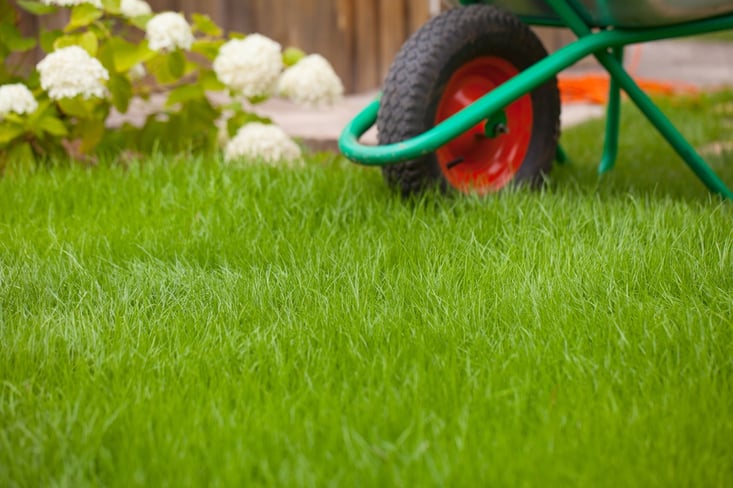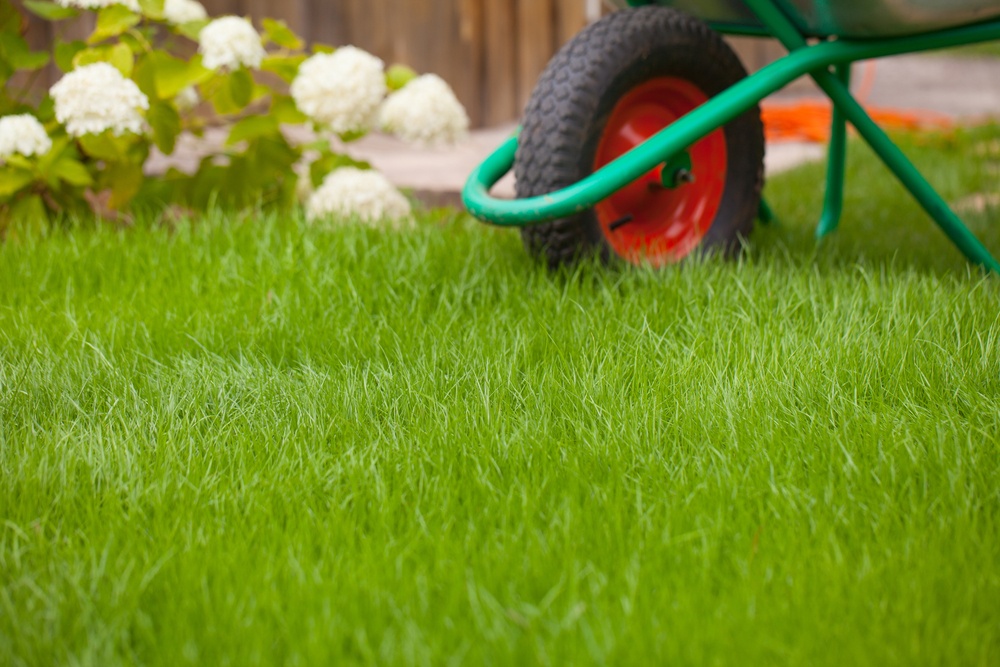
There are many reasons why an Ottawa homeowner might need to try and reestablish their lawn. Furthermore, there are dozens of different ways to go about starting your new turf. From seeding to sodding, the Ottawa lawn service experts at Nutri-Lawn know all the ins and outs of starting a new lawn. The following is a crash course for planting a lawn that will last a lifetime.
Step 1 – Assess the Site
The first step to establishing a strong and healthy lawn is performing a site assessment of your Ottawa property. This will help you determine what improvements you'll need to complete before moving forward with your project. During your assessment, remember to check:
- The depth of the soil
- The soil type, fertility, pH levels and organic matter content
- For the presences of weeds, diseases and insects
You will also want to check how well water drains from your property. Make note of any steep slopes and shady areas. It also helps to have an understanding of how temperature, sunlight and rainfall conditions impact your property. A Nutri-Lawn technician will be able to tell you about Ottawa's climate and how that influences local turf growing conditions.
Step 2 – Site Preparation
Preparing the soil for your seed or sod application is crucial. Before you add a fresh layer of topsoil to your lawn, make sure to clear the area of any debris. This includes branches, concrete, garbage, stones, etc. You'll also want to loosen the existing soil. This could require a core aeration treatment if your soil has become compacted. Finally, be sure to correct the grade in areas of your lawn that have exhibited draining issues. Remember, turf requires 10 to 20 centimeters of high-quality topsoil to grow in. A lawn service technician in Ottawa may also recommend adding amendments to the soil in order to establish adequate growing conditions. A starter fertilizer high in phosphorus may also be required.
Step 3 – Selecting Your Grass Type
Ottawa lawns consist mostly of cool season turf grasses. In most cases, this will consists of a seed mixture. Kentucky bluegrass, ryegrass and fescues are sowed together in order to provide even coverage. As bluegrass varieties require more sun, this seed will flourish more in open areas. Ryegrasses have a high tolerance to wear and tear and will thus remain vibrant in high traffic areas. Fine fescues are more shade tolerant and will help ensure even coverage in areas that don't receive a lot of sunshine.
Where conditions are not suitable for traditional grass coverage (i.e. steep slopes or heavily shaded areas) you may wish to try growing an alternative type of ground cover. Consult with an Ottawa lawn service technician from Nutri-Lawn for more details.
Step 4 – Seed or Sod?
There are benefits to both lawn-starting practices. Sodding, for example, provides an instant lawn. Unfortunately, sodding can be very expensive, depending on the area you're working with. It also requires daily watering to ensure proper establishment. Seed applications generally contain a greater variety of grass species. However, a seeded lawn requires constant care and consistent irrigation.
If you decide to use sod, Nutri-Lawn Ottawa recommends hiring a professional to lay it for you. A professional lawn care service will use a roller to press the sod and ensure good sod-to-soil contact. It's also important that you water your new sod regularly with an inground irrigation system.
If you use seed, make sure you select a seed mixture that works with your soil type. If possible, spread your seed in the fall (mid-August or early September) or early spring (April). Follow the directions listed on your seed mix or ask an Ottawa lawn service technician for assistance. Spread the seeds evenly on your property, raking lighting to ensure distribution. Water your lawn lightly and frequently with your inground irrigation system.
Establishing a new lawn can take time and patience. For help get your lawn started contact the Ottawa lawn service technicians at Nutri-Lawn today.






